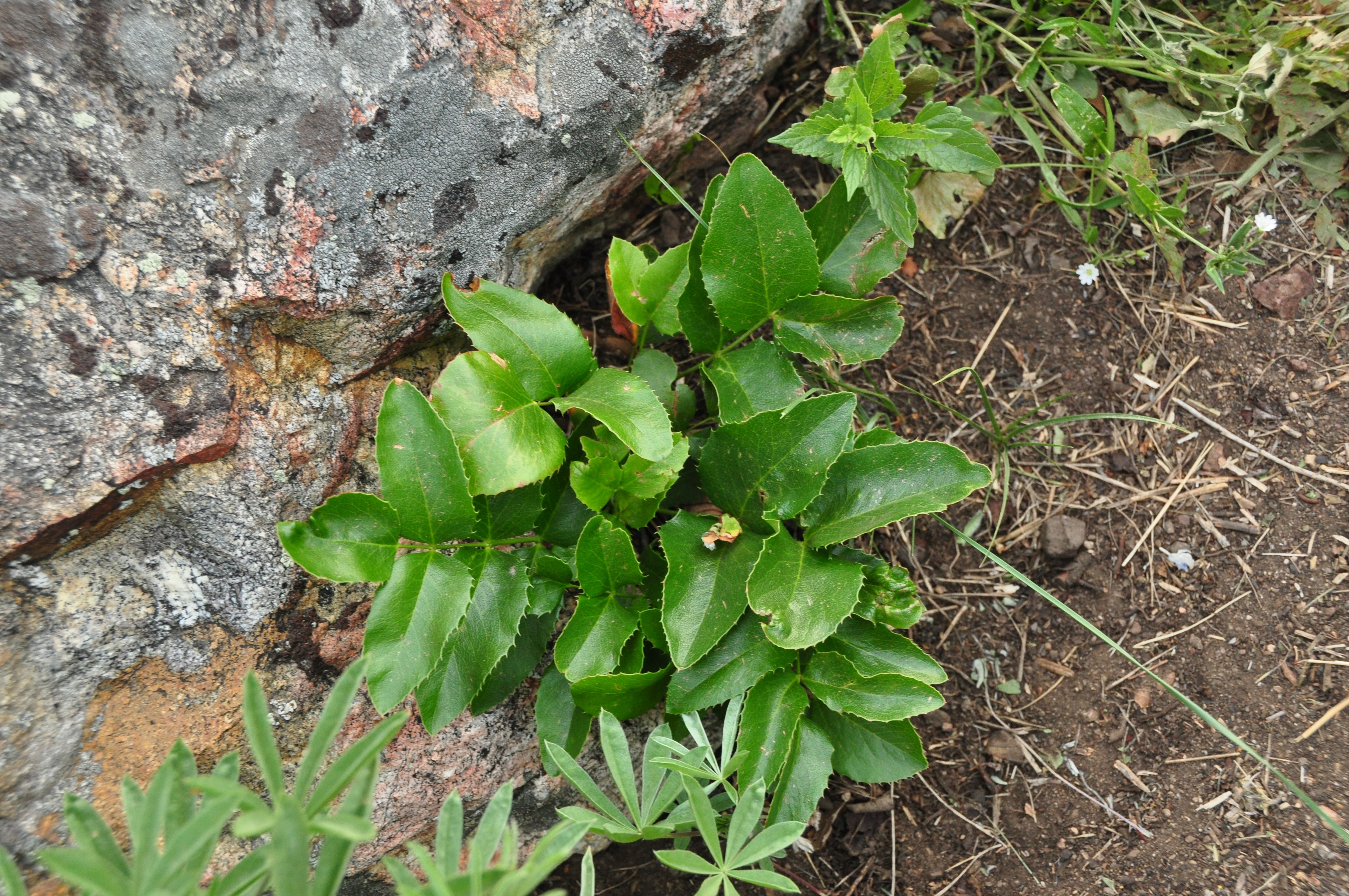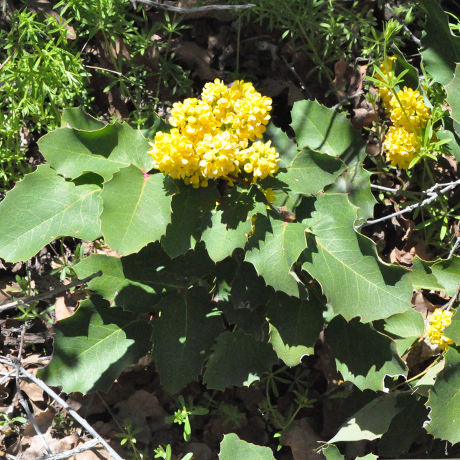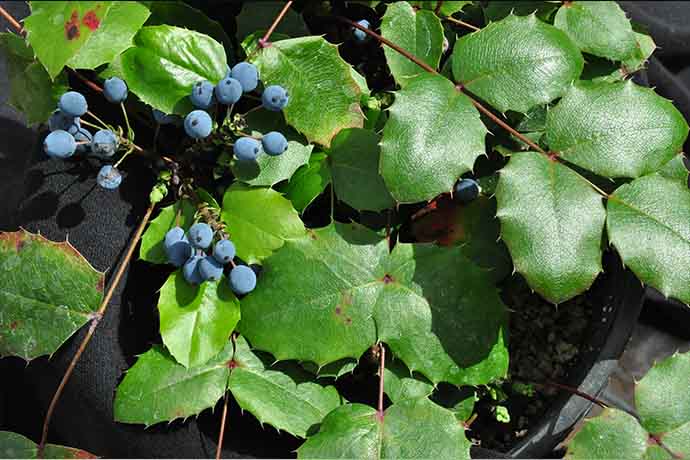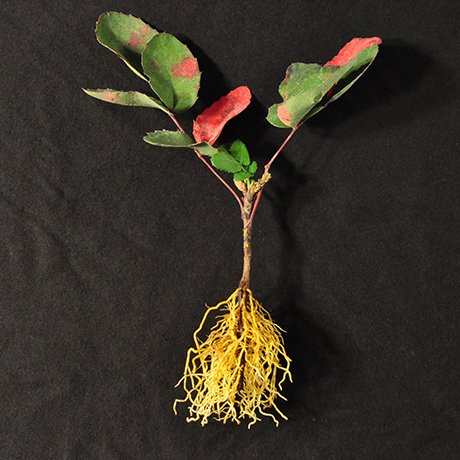Utah Native Plants for the Landscape: Creeping Barberry
Creeping barberry (Berberis repens) is a small, woody groundcover that is native to most of western North America (Fig. 1).
It is typically 6-24 inches tall and is characterized by evergreen compound leaves that are dull green in the summer and change to various shades of red and purple in winter .
Creeping barberry has bright, yellow flowers that develops in racemes from the leaf axil (Fig. 2).The flowers give rise to dusky, dark blue berries about 1/3 of an inch in diameter (Fig. 3). It grows most actively in the spring, but can grow at different times of year depending on conditions.
Creeping barberry can propagate itself by seed, rhizomes, stolons, and stem layering (Fig. 4). As a result, this plant can spread in the landscape, though not aggressively. One of the advantages of creeping barberry is that it is tolerant of full sun, partial shade, and heavy shade. As a result it is a good option for dry, shady areas that are difficult for many plants.
Once established it requires minimal maintenance; primarily limited to trimming it back and cleaning up debris and litter than can get trapped in the leaves and stems. It is also resistant to deer and attracts pollinators when in bloom.
Creeping barberry prefers well-drained neutral soils, but can thrive in shallow, rocky soils. Size and vigor varies with habitat, with poor conditions producing small plants with only one shoot and one or two leaves, while favorable conditions produce more robust plants or mats of plants. But, regardless of size, creeping barberry persists widely.
Creeping barberry also attracts bees and birds.
References
- Shaw, N.L., S.B. Monsen, and R. Stevens. 2004. Shrubs of Other Families. In: Monsen, S.B., R. Stevens, and N.L. Shaw., comps. 2004. Restoring western ranges and wildlands. USDA-FS Gen. Tech. Report RMRS-GTR-136-vol.2.
- USDA, NRCS. 2014. The PLANTS Database. National Plant Data Team, Greensboro, NC 27401-4901 USA.
Figure 1.
Figure 2.
Figure 3.
Figure 4.

